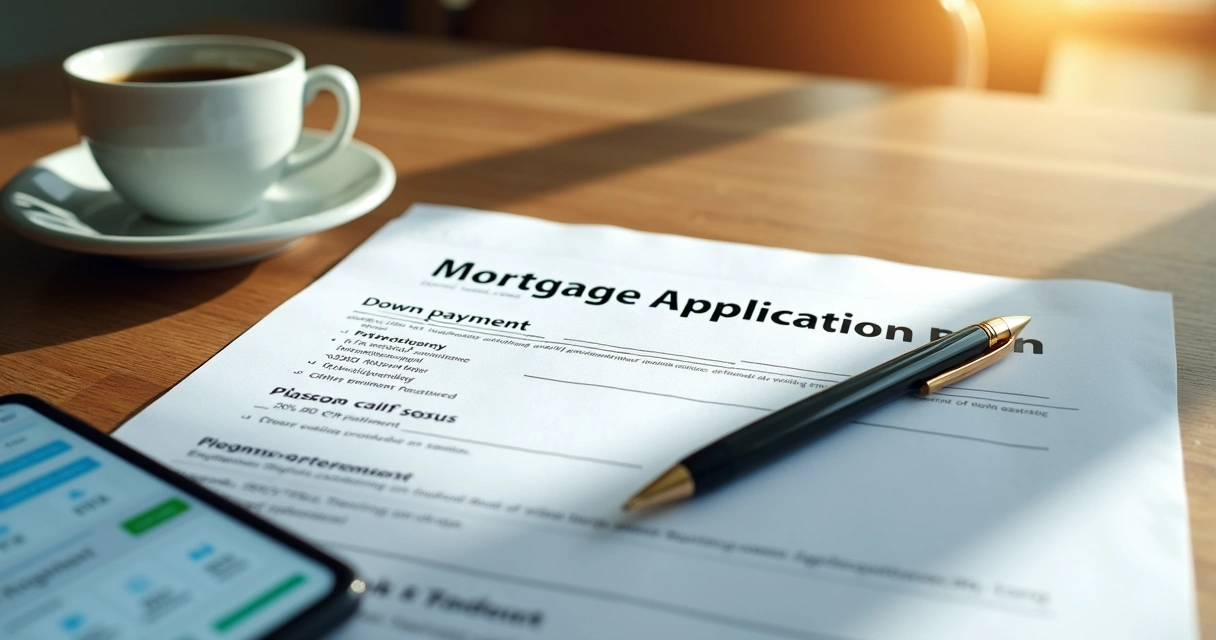Owning a home in the United States is a dream for many. It’s not exclusive to citizens or permanent residents. You don’t actually need a green card to finance a property purchase, though the process does have extra layers. Things get technical, and sometimes, a little unpredictable. But with the right information—and a bit of persistence—doors open.
This article brings clarity and honest guidance on how to secure real estate lending without permanent resident status. Just as Heart Mortgage does every day for buyers from all walks of life, let's break down the process step by step, with some practical tips and a touch of real-world expectation.
Understanding your status: how it affects loan options
The US mortgage market is one of the most accessible in the world, but rules shift depending on your immigration documentation. There are a few broad categories that matter for your eligibility and borrowing costs:
- Permanent Residents: Green card holders often qualify for conventional mortgages and government-backed loans with similar rates and terms as US citizens. The requirements are pretty similar and approval chances are high when documentation is clear. The main difference is you’ll need to show your permanent residency card alongside other forms of ID.
- Non-Permanent Residents: These are individuals with valid work or study visas (like H-1B, L-1, F-1, etc.). Many lenders will work with you, especially if you can demonstrate legal status and proof that you'll remain in the US for at least three years. The odds improve if your documentation includes a Social Security Number and established credit history.
- Foreign Nationals: Here, things get a bit more complex. If you live primarily outside the US or lack typical visa status, you can still access home loans, though terms may be stricter. Higher down payments and interest rates are common. Some banks ask for 30% or even 50% upfront. However, specialized lending programs exist for this market, and options are more varied than most people expect. Non-U.S. citizens can obtain mortgages in the U.S., but different standards apply.
- ITIN Holders: If you don’t have a Social Security Number, but you do file taxes with an Individual Taxpayer Identification Number (ITIN), it’s possible to get financing, though not every lender accepts this path. Heart Mortgage regularly guides ITIN clients through the ITIN mortgage process, maximizing their approval odds.
“Your residency status shapes what's possible—but doesn't shut the door.”
Common loan types for non-green card holders
The next step is to understand which loan products are usually open to you. Take a look at the most common paths:
- Conventional Loans: These are standard mortgages, not backed by the government. If you have a valid visa and the right paperwork, many lenders will offer these. The rates are usually competitive for qualified applicants. Requirements include established credit, steady income, and often a 20% down payment, though this varies.
- FHA Loans: Backed by the Federal Housing Administration, FHA loans are popular for first-time buyers, including many non-citizens. Permanent and non-permanent residents can apply, needing proof of legal US residency. Lower credit scores are allowed, and down payments can be as low as 3.5% in some situations. There’s extra documentation involved, but overall, this can be a practical option if you have limited credit history according to LendingTree's guide to immigrant mortgages.
- VA Loans: These are for veterans and eligible military members, including some non-citizens who served in the US Armed Forces. The requirements are more specific, but if this applies, terms are excellent—sometimes even zero down and no mortgage insurance.
- USDA Loans: USDA home loans are for properties in certain rural areas and are open to eligible non-citizens. If you plan to buy outside a city, this can be a strong choice with low or no down payment. There are income and location restrictions.
- Portfolio and Non-QM Loans: These are specialty products for those who don’t tick all the standard boxes—like foreign nationals, people buying investment properties, or those whose income is hard to prove on paper. Interest rates run a bit higher, but credit flexibility is much broader. Documentation is sometimes more lenient (think international credit reports or bank reference letters).
You’ll see that your route depends mainly on your current paperwork, the source of your funds, and the experience of your chosen broker. Personalized service makes a huge difference—which is why companies like Heart Mortgage put such focus on direct, human guidance.

Documentation you’ll need—and alternatives when you lack them
Gathering the right paperwork is half the challenge. For non-citizens, requirements are a bit heavier, but not impossible. Most lenders request:
- Valid passport and current visa if applicable
- Proof of legal status, such as green card, work permit, or ITIN approval letter
- Tax returns for the past two years (US or home country if recent arrival)
- Recent pay stubs or proof of income
- Bank statements, typically the last two to six months
- Credit report and score (US or international, when possible)
- Proof of funds for down payment and closing costs
- Contact information for your employer and landlord (if renting)
If you don’t have a US credit history, don’t panic. Lenders sometimes accept alternative documentation. Acceptable substitutes include:
- International credit reports (from agencies like Experian, Equifax, or TransUnion in your home country)
- Reference letters from banks
- Proof of regular rent or utility payments over 12 months
Alternative credit documents help establish creditworthiness when US records are thin. Be patient—approvals may take a little longer. It’s sometimes like waiting at the airport with all your paperwork in hand, hoping you have just the right stamp. You often do.
Down payments: why more is better
One of the biggest differences in property loans for non-residents is the down payment. While US citizens may buy homes with 3% to 5% down (with strong credit), foreign buyers and people without a green card are often asked for 20% or more upfront. Investopedia notes it could even be 30% or higher, depending on the risk and the bank’s policies.
“A larger down payment opens many doors and lowers lender risk.”
On the plus side, the more you put down, the lower your monthly payment and the less you pay in interest over the life of your loan. Consider flexible savings and be open to gifts from family—just be ready to provide the document trail, since this is tightly checked.
Credit scores—and how to build them as an immigrant
Many new arrivals to the US have little or no FICO score. Most lenders check this when you apply for a mortgage, but if you haven’t yet built up local credit, it’s not a dealbreaker. Some steps can help improve your odds:
- Open a secured credit card or bank account in the US as soon as possible. Use it regularly and always pay on time.
- Ask your international bank to report your history to US credit bureaus, if possible.
- Request utility and phone companies to add your payment record to US credit agencies (some will).
- Keep balances low and avoid late payments.
- If renting, keep proof of on-time payments for at least 12 months.
Even six to twelve months of good behavior can make a difference. Some banks accept these alternative histories, especially with a strong down payment or income. More details on building credit as a non-citizen are available in Heart Mortgage's educational resources.

The hurdles: unique challenges for foreign borrowers
Borrowing to buy US property as a non-citizen isn't always straightforward. Here are some of the challenges that often crop up:
- No SSN: Not all lenders will work with ITIN only clients, but some do, notably through custom programs. Approval is possible with steady income and good supporting documentation.
- Higher Interest Rates: Expect to pay slightly more than citizens or residents. This shouldn’t be a surprise, since risk is higher for banks.
- Currency Transfer and Documentation: If funds come from outside the US, banks want to see clear evidence of where your money originated. Prepare for extra paperwork—sometimes more than once.
- Approval Delays: A non-standard application can slow the process. Plan for a slightly longer timeline, especially if there’s international paperwork or translation involved.
- Property Usage: Some programs are strict: homes for personal use are easier to finance than pure investments, though both are possible. Check this early.
It might feel like trying to plug into a system that wasn’t really designed for outsiders. Yet, US citizenship is not a requirement for a mortgage—just more documentation and patience.
Legal advice and the limits of property ownership
This might seem obvious, but it's worth stating: owning a property in the US does not give you any immigration benefits or special rights to live in the country. The loan underwriter is looking at financial risk, not immigration policy. If your visa expires, you’ll still owe your mortgage.
“Buying a home is not a shortcut to legal status.”
If you’re unclear on the legal side, consult with an immigration specialist and consider a real estate lawyer. The best lenders, like Heart Mortgage, can refer you to trusted partners, but the decision—and responsibility—remains yours.
Investors and other property options
Some buyers want a residence. Others see a US home as an asset, not a place to live. The law allows foreigners to own multiple properties: single-family homes, apartments, or investment units. Restrictions rarely exist at the federal level, though some localities have specific limits on certain types of properties. Loans for investment homes may have higher rates and lower loan-to-value ratios, but are definitely possible.
Rental income from US property is subject to US taxes. You must report this income (and any mortgage interest paid) every year by filing with the IRS. Even if you don’t live in the US, your financial footprint stays.
Preparing your mortgage application: practical tips
- Start early: Documentation can take longer for non-citizens. Begin gathering your records—even before you start looking for homes.
- Be honest: Any gap or ambiguity will delay things, so disclose immigration and work status fully. Surprises don’t help here.
- Translate documents: Submit certified translations for any records not in English. It may be tedious, but it’s non-negotiable for most underwriters.
- Keep contact with your broker: Lenders fluent in immigrant lending make things easier. Don’t hesitate to ask for updates or clarifications.
- Compare options: Institutions vary. Rates, fees, required down payments, and property types all shift. Research, ask questions, and pick a lender with proven experience in this field. Heart Mortgage has deep experience helping those without standard US paperwork.
For more practical advice from experienced mortgage professionals, Heart Mortgage's educational blog has step-by-step guides, loan definitions, and real user stories covering every situation.

Choosing your partner: why lender expertise matters
The process of buying in a new country is easier with the right help. A mortgage broker or lender who understands immigration paperwork, alternate credit, and currency transfers can clear many roadblocks before you even see them coming.
Heart Mortgage, for example, specializes in walking buyers step by step through every part of the US mortgage process. Whether it’s your first family home or an international investment property, honest advice and flexibility make the difference. Buyers benefit from access to unique programs, including portfolio loans and custom options for ITIN holders. That’s one reason so many succeed, even without a green card or social security number.
Quick checklist: steps to success
- Define your status: Green card, visa, ITIN, or foreign national?
- Check which loans are available to you and estimate your down payment.
- Begin building or documenting your credit history now.
- Collect, translate, and organize all financial and ID papers.
- Talk to a lender with direct experience guiding non-residents.
- Get a pre-approval letter to strengthen your eventual home offer.
- Talk to legal and tax specialists as needed—ownership does not equal residency.
- Shop for a property within your financing limits, including future property taxes and insurance in your budget.
I can’t promise you it’s always simple. But for thousands each year, determination (and the right documentation) wins out.

Final thoughts: your path to US property ownership
Immigrants and non-citizens are buying homes in the US every day. The procedures might look stacked against you at first glance. But with a clear plan, proof of funds, and a tailored loan program, you can find doors opened—not closed. Heart Mortgage is driven by this belief, working tirelessly so your first (or next) US home is within reach.
Your status is your starting point, not your barrier.
If you are looking to start the process or simply want a better understanding of your options, reach out to our Heart Mortgage team. Learn more about how we make property financing for non-citizens possible every day. Let’s put the keys in your hand, together.
Frequently asked questions
Can non-green card holders buy property?
Yes, you can buy real estate in the US without a green card. There is no citizenship or residency restriction on property ownership itself. Anyone, including foreign nationals and those on temporary visas, can purchase property. However, the requirements for financing are more involved if you are not a citizen or permanent resident.
How to get a mortgage without a green card?
To secure a mortgage without a green card, you’ll need to prove your legal status (such as a valid visa or ITIN), income, and creditworthiness. Lenders require more documentation, and the down payment is often higher (20–30%). Some accept alternative credit documents—such as international credit reports or proof of rent payment. Approval is possible for both temporary residents and non-residents, especially through lenders with programs tailored for these borrowers. More details can be found in the foreign national mortgage guide from Heart Mortgage.
What documents do I need for property loans?
Most lenders ask for: passport and visa or ITIN documents, proof of legal US status, two years of tax returns, recent pay stubs, several months of bank statements, and some form of credit history (local or international). If US credit history is lacking, alternative documents like proof of on-time rent can help. A certified translator may be needed for any non-English paperwork. For those filing US taxes with ITIN only, review specialized resources like the ITIN mortgage guide.
Is property financing harder for non-residents?
Yes, generally it is. The process involves more paperwork, larger down payments, and often higher interest rates. Timelines may be longer, and alternative forms of credit documentation can be required. However, there are many success stories—and solutions—if you work with an experienced lender. As recent NerdWallet guides point out, persistence and preparation get results.
Are there special lenders for foreign buyers?
Yes. Some lending companies, like Heart Mortgage, offer programs made specifically for international borrowers, ITIN holders, and those without traditional US paperwork. These lenders understand the unique obstacles and can work with alternative documentation, foreign income, and customized down payment structures. Choosing a partner with experience in foreign national mortgage lending will greatly improve your chances of approval.





